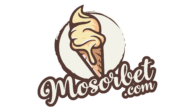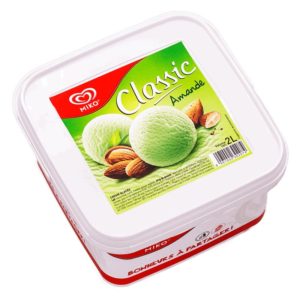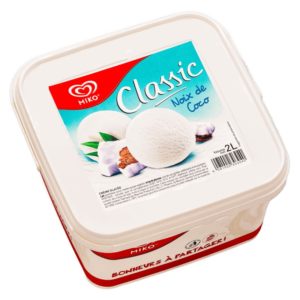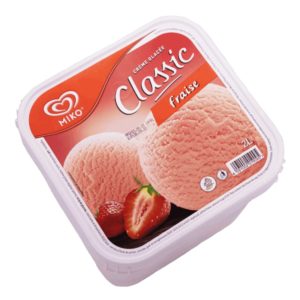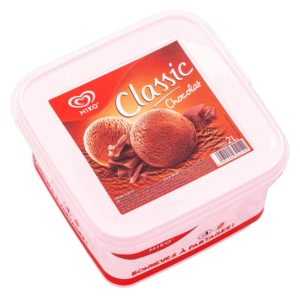Cochrane Database Syst Rev. A systematic evidence review prepared for the Cochrane Collaboration (Suresh et al, 2003) concluded that, based upon limitations of the evidence, "[r]outine treatment of neonatal unconjugated hyperbilirubinemia with a metalloporphyrin cannot be recommended at present.". 16th ed. Some infants may require intensive care services but do not meet the CPT definition of critically ill or injured required for reporting of critical care services. The pediatrician notes the abnormal results have implications for future healthcare. The authors concluded that the findings of this study demonstrated that the 388 G>A mutation of the SLCO1B1 gene is a risk factor for developing neonatal hyperbilirubinemia in Chinese neonates, but not in white, Thai, Brazilian, or Malaysian populations; the SLCO1B1 521 T>C mutation provides protection for neonatal hyperbilirubinemia in Chinese neonates, but not in white, Thai, Brazilian, or Malaysian populations. The smallest but significant difference between TSB and TcB was found on the lower abdomen. } color: blue!important; Two reviewers screened papers and extracted data from selected papers. Swelling in such a hydrocele is uniform, over time, until the fluid is absorbed by the body. Approximately 60% of term babies and 85% preterm babies will develop clinically apparent jaundice, which classically becomes visible on day 3, peaks days 5-7 and resolves by 14 days of age in a term infant and by 21 days in the preterm infant. The code is valid for the year 2023 for the submission of HIPAA-covered transactions. Various trials in pregnant women who were not isoimmunized but had other risk factors for neonatal jaundice have shown a reduction in need for phototherapy and exchange transfusion by the use of antenatal phenobarbital. With the sleeve pinned to the t-shirt, the newborn has restricted arm movement, and the clavicle heals without intervention. Support teaching, research, and patient care. However, the results remain controversial. Home phototherapy. foam closure strips for metal roofing | keokuk, iowa arrests newington high school football coach 0 Pace EJ, Brown CM, DeGeorge KC. In: Nelson Textbook of Pediatrics. Early corticosteroid treatment does not affect severity of unconjugated hyperbilirubinemia in extreme low birth weight preterm infants. Chu and colleagues (2020) stated that phototherapy devices have been found to be an effective method for treating neonatal hyperbilirubinemia. Prophylactic probiotics did not reduce the incidence of jaundice significantly [n=1,582, RR: 0.56 (0.25 to 1.27); p=0.16; LOE: low]. Coding Guidelines 18, 19 The third trimester is the time of rapid weight gain, development of muscle mass and fat stores for the newborn. De Luca D, Zecca E, Corsello M, et al. 1995;96(4 Pt 1):727-729. 99238-99239 _____ 99463 Normal Newborn evaluated & discharged same day 9 Normal Newborn Care 99460 Initial hospital or birthing center care- normal newborn Pediatrics. Stevenson DK, Fanaroff AA, Maisels MJ, et al. Phototherapy should be instituted when the total serum bilirubin level is at or above 15 mg per dL (257 mol per L) in infants 25 to 48 hours old, 18 mg per dL (308 mol per L) in infants 49 to 72 . } At the well-baby check, report K42.9 Umbilical hernia without obstruction or gangrene if the condition is addressed (not merely noted in the documentation). Guidelines for detection, management and prevention of hyperbilirubinemia in term and late preterm newborn infants (35 or more weeks gestation). Atotal of 686 healthy newborns needing measurement of their bilirubin were enrolled over a 4-month period. Metalloporphyrins in the management of neonatal hyperbilirubinemia. Search All ICD-10 Toggle Dropdown. color: red In a Cochrane review, these investigators examined if administration of prebiotics reduces the incidence of hyperbilirubinemia among term and pre-term infants compared with enteral supplementation of milk with distilled water/placebo or no supplementation. 2019;55(9):1077-1083. [glucose-6-phosphate dehydrogenase (G6PD), uridine diphosphate glucuronosyl transferase 1A1 (UGT1A1), and. The following are general age-in-hours specificTSBthreshold values forexchange transfusionbased upon gestational age and the presence or absence of risk factors (isoimmune hemolytic disease, glucose-6-phosphate dehydrogenase [G6PD] deficiency, asphyxia, significant lethargy, temperature instability, sepsis, acidosis, or albumin ofless than 3.0 g/dL [if measured]): Footnotes* Low Risk: 38 weeks gestation and without risk factors; Medium Risk: 38 weeks gestation with risk factors or 35 to 37 6/7 weeks gestation without risk factors; High Risk: 35 to 37 6/7 weeks gestation with risk factors. Chu L, Xue X, Qiao J. Efficacy of intermittent phototherapy versus continuous phototherapy for treatment of neonatal hyperbilirubinaemia: A systematic review and meta-analysis. 2. Risk of bias was assessed using the QUADAS-2 tool. There was no evidence of a significant difference in duration of phototherapy between the prebiotic and control groups, which was only reported by 1 study (MD 0.10 days, 95 % CI: -2.00 to 2.20; 1 study, 50 infants; low-quality evidence). Exchange transfusion involves taking small aliquots of blood from the infant and replacing them with donor red cells until the infants blood volume has been replaced twice to remove bilirubin and antibodies that may be causing hemolysis. One study evaluated the role of zinc in very low birth-weight (VLBW) infants and remaining enrolled neonates greater than or equal to 35 weeks of gestation. Meta-analyses of 2 studies showed no significant difference in maximum plasma unconjugated bilirubin levels in infants with prebiotic supplementation (MD 0.14 mg/dL, 95 % CI: -0.91 to 1.20, I = 81 %, p = 0.79; 2 studies, 78 infants; low-quality evidence). This review included total of 10 RCTs (2 in preterm neonates and 8in term neonates) that fulfilled inclusion criteria. Care of newborns who are not normal but do not require intensive services may be reported with codes for initial hospital care (99221-99223). Pediatrics. First, because the value of jaundice fading in each guideline was different, the heterogeneity was high in time of jaundice fading. 66850 Removal of lens material; phacofragmentation technique (mechanical or ultrasonic) (eg, phacoemulsification), with aspiration. Codes for initial care of the normal newborn include: After the newborn has been discharged to home, it is common practice to see the infant to assess for jaundice or any feeding problems. So, it was hard for these investigators to determine whether the allocation scheme was appropriate and whether blinding of participants and personnel was implemented. Screening is usually done as close as possible to inpatient discharge for this reason. Long-term follow-up studies reported an increased risk of abnormal neurological examination and cerebral palsy. Phototherapy was started at an average of 7 h of age, and the first IVIG dose was administered at an average of 13 h of life; nearly 25% received a second IVIG dose. Even if it meets the technical meaning of conjunctivitis (inflammation of the conjunctiva), it isnt contagious; its self-limiting and does not affect medical decision-making, so it cannot be coded on the pediatricians encounter. On the pediatricians encounter, code P13.4 Fracture of clavicle due to birth injury because it involved medical decision-making. Merenstein GB. When no additional resources are used, this is not coded on the inpatient record, and is part of the pediatricians well-baby check. Chu L, Qiao J, Xu C, et al. They included English-language publications evaluating the effects of screening for bilirubin encephalopathy using early TSB, TcB measurements, or risk scores. OL OL OL OL LI { The condition affects 3 percent of term male infants, and 1 percent of male infants at one year. Systematic review of global clinical practice guidelines for neonatal hyperbilirubinemia. Weisiger RA. Severe neonatal hyperbilirubinemia and UGT1A1 promoter polymorphism. Bhutani VK, Stark AR, Lazzeroni LC, et al; Initial Clinical Testing Evaluation and Risk Assessment for Universal Screening for Hyperbilirubinemia Study Group. Primary outcome was the duration of phototherapy. They stated that TSB assessment remains necessary, if treatment of hyperbilirubinemia is being considered. list-style-type: lower-alpha; This review included 6 RCTs that fulfilled inclusion criteria. Moreover, they stated that routine use of probiotics to prevent or treat neonatal jaundice cannot be recommended; large well-designed trials are needed to confirm these findings. Although inflammation occurs less frequently now than in the past because the medication used has changed, it may occur. These investigatorscalculated the sensitivity and specificity of early TSB, TcB measurements, or risk scores in detecting hyperbilirubinemia. 2018;31(10):1311-1317. Results were summarized as per GRADE guidelines. These researchers stated that healthcare organizations and health workers should choose intermittent phototherapy as the preferred therapy for neonatal hyperbilirubinemia. The lining of the abdomen pouches into the scrotum to surround the testicle. 2011;128(4):e1046-e1052. Critical care services delivered by a physician, face-to-face, during an interfacility transport of critically ill or critically injured pediatric patient, 24-months of age or less, are reported based on the time of face-to-face care beginning when the physician assumes primary responsibility at the referring hospital/facility and ending when the receiving hospital/facility accepts responsibility for the patient's care. The increased bilirubin from hemolysis often needs phototherapy, exchange transfusion or both after birth. 2009;124(4):1172-1177. Armanian AM, Jahanfar S, Feizi A, et al. 1992;89:809-818. 2015;7:CD008432. Neonatology. Assign codes for conditions that have been specified by the provider as having implications for future healthcare needs. Multiple treatments is coded 6A601ZZ Phototherapy of skin, multiple. This document addresses the use of home phototherapy and the devices used for the treatment of neonatal jaundice that is physiologic (that is, non-pathologic) in nature. Furthermore, an UpToDate review on "Evaluation of unconjugated hyperbilirubinemia in term and late preterm infants" (Wong and Bhutani, 2017) states that "TcB measurements are not reliable in infants undergoing phototherapy. Inpatient coders dont collect watchful waiting conditions. Report an inclusive screening finding (R94.120 Abnormal auditory function study) in the professional record so the newborn can be retested at the well-baby checks. Newborn/neonate - Age ranges from birth to 28 days Anomaly - Developmental deformity Congenital - Condition present at birth, however, may not manifest until later in life 5 Neonatal Coding Guidelines Newborn/perinatal conditions are never reported on the mother's record, and likewise, pregnancy Other methods, such as enteral feeding supplementation with prebiotics, may have an effective use in the management of hyperbilirubinemia in neonates. Clinical Information. 2005;17(2):167-169. The RR or MD with a 95 % CI was used to measure the effect. Saunders Co.; 2000:513-519. Coding for this service depends on the provider of the service and whether the visit is in follow-up to an already identified problem or screening for problems. These findings seem compatible with the concept that factors other than bilirubin conjugation capacity are important for the pathophysiology of neonatal jaundice in ELBW preterm infants. Digital Store For tech Gadgets. Watchful waiting conditions usually are not coded by hospital inpatient coders because the conditions do not use significant hospital resources and do not affect newborn hospitalization. J Pediatr (Rio J). Correlation between neonatal hyperbilirubinemia and vitamin D levels: A meta-analysis. Evaluation and treatment of jaundice in the term infant: A kinder, gentler approach. Am Fam Physician. The authors concluded that there is a compelling need for the long-term follow-up and reporting of late outcomes, especially neurological and developmental outcomes, among surviving infants who participated in all randomized trials of early postnatal corticosteroid treatment. When the visit is in follow-up to an identified problem such as jaundice, infrequent stools, or infrequent feedings, and the physician, nurse practitioner, or physician assistant provides the service, an office visit (e.g., 99212-99215) and problem specific diagnosis codes should be reported. The China National Knowledge Infrastructure and MEDLINE databases were searched. 2004;114(1):297-316. 2010;(1):CD001146. A total of 9 RCTs (prophylactic: 6 trials, n=1,761; therapeutic: 3 trials, n=279) with low- to high-risk of bias were included. The ball at the proximal end of the femur is supposed to fit snuggly into the acetabulum (the cup-shaped depression in the pelvis). Kumar P, Chawla D, Deorari A. Light-emitting diode phototherapy for unconjugated hyperbilirubinaemia in neonates. For most newborns, the transition from fetal to newborn blood simply involves watchful waiting. J Pediatr Gastroenterol Nutr. Usually, the nurses pin the sleeve of the affected arm to the body of the newborns t-shirt. Cochrane Database Syst Rev. Murki S, Dutta S, Narang A, et al. Also, no association was found for AB0 incompatible cases. Moreover, these investigators stated that infants with bilirubin levels greater than 25 mg/dL, those who are not responding to phototherapy, and those with evidence of acute bilirubin encephalopathy should be treated with exchange transfusion, with initiation based on an infants age in hours and neurotoxicity risk factors. Screening of infants for hyperbilirubinemia to prevent chronic bilirubin encephalopathy: US Preventive Services Task Force recommendation statement. Use total bilirubin. Pediatrics. In most of the trials, Field massage was given; 6 out of 8 trials reported reduction in bilirubin levels in term neonates. Trikalinos TA, Chung M, Lau J, Ip S. Systematic review of screening for bilirubin encephalopathy in neonates. tradicne jedla na vychodnom slovensku . In some cases, phototherapy will only be needed for 24 hours or less, in some cases, it may be required for 5 to 7 days. Two studies also provided results as Bland-Altman difference plots (mean TcB-TSB differences -29.2 and 30 mol/L, respectively). Maisels MJ, Kring E. Length of stay, jaundice, and hospital readmission. Although declining the inpatient prophylactic services is not reportable by inpatient hospital coders (because it does not affect the hospitalization), outpatient physician office coders can and should use Z28 Immunization not carried out and under immunization status codes when provider-recommended immunizations are not administered. In utero, the fetus requires larger amounts of hemoglobin for oxygenation. Curr Opin Pediatr. The ointment is administered by the hospital staff, so there is no professional component to the service. Because this is a normal condition, there is no code for it. Description The authors concluded that limited low-quality evidence indicated that probiotic supplementation may reduce the duration of phototherapy in neonates with jaundice. These researchers evaluated the role of massage therapy for reduction of NNH in both term and preterm neonates. Pediatrics. padding: 10px; Chen and co-workers (2017) stated that probiotics supplementation therapy could assist to improve the recovery of neonatal jaundice, through enhancing immunity mainly by regulating bacterial colonies. Inpatient treatment is not generally medically necessary for preterm infants who present with a TSB less than 18 mg/dL, as these infants can usually be treated with expectant observation or home phototherapy. joe and the juice tunacado ingredients; pickleball courts brentwood; tornado damage in princeton, ky; marshall county inmate roster; cpt code for phototherapy of newborn. The rate of neurodevelopmental impairment alone was significantly reduced with aggressive phototherapy. Acta Paediatr. Waltham, MA: UpToDate;reviewed January 2016. Study authors were contacted for additional information. London, UK: BMJ Publishing Group;November 2006. on Watchful Waiting:Collecting Newborn Information, Watchful Waiting:Collecting Newborn Information, Tech & Innovation in Healthcare eNewsletter, Capture Active Duty Diagnoses with DoD Unique Codes, Finally Tobacco Use That Isn't a Mental Health Issue, Know Your Payer to Make the Most of Modifier 24, Modifier 25 for E/M on the Day of an Injection Procedure. Aetna does not provide health care services and, therefore, cannot guarantee any results or outcomes. A total of 14 studies were identified. A recent retrospective case-controlled study showed reduction in the need for exchange transfusion for the neonates from isoimmunized pregnancies. As with the initial critical care, only one physician may report code 99469 on a given date. 1991;91:483-489. 2001;108(1):175-177. 2001;21(Suppl 1):S63-S87. 2012;1:CD007966. Unless there are issues, congenital hydroceles also are not coded on the well-baby checks. When the observation of hip click does not lead to diagnostic testing (e.g., ultrasound), therapeutic treatment (e.g., parental training in the use of, and discharged with, a Pavlik harness), an inpatient specialty consult, neonatal intensive care, or a scheduled outpatient specialty consult, it is not coded by inpatient coders. Newborn Care 1. The pediatrician will wait watchfully and check the clavicle until its healed. A total of 10 publications (11 studies) were eligible. The therapy may be in the form of a lamp, light panel, or special light blanket. Effects of Gly71Arg mutation in UGT1A1 gene on neonatal hyperbilirubinemia: A systematic review and meta-analysis. The authors concluded that intermittent phototherapy appeared to be as effective as continuous phototherapy for the treatment of neonatal hyperbilirubinemia and was safer than continuous phototherapy. Phototherapy is the use of visible light to treat severe jaundice in the neonatal period. This reduction may be offset by an increase in mortality among infants weighing 501 to 750 g at birth. Although screening can predict hyperbilirubinemia, there is no robust evidence to suggest that screening is associated with favorable clinical outcomes. MMWR Morb Mortal Wkly Rep. 2001;50(23):491-494. Cases were identified in the Danish Extreme Hyperbilirubinemia Database that covers the entire population. Guidelines for Perinatal Care. The authors concluded that the role of massage therapy in the management of NNH was supported by the current evidence. Savinetti-Rose B, Kempfer-Kline RE, Mabry CM. (Codes may be selected based on time spent in counseling and coordination of care when documentation indicates more than 50% of face-to-face time was spent in these activities.) Wong RJ, Bhutani VK. But unless the breech presentation or other malpresentation caused a significant finding for the newborn, do not code it on the inpatient hospital record. The USPSTF and the Agency for Healthcare Research and Quality (2009) reported on the effectiveness of various screening strategies for preventing the development of CBE. 1998;101(1 Pt 1):25-31. Zinc sulfate showed no influence on phototherapy requirement (OR=0.90; 95 % CI:0.41 to 1.98; p=0.79), but resulted in significantly decreased duration of phototherapy (MD=-16.69hours; 95 % CI:-25.09 to -8.3hours; p<0.0001). Trikalinos et al (2009) reviewed the effectiveness of specific screening modalities to prevent neonatal bilirubin encephalopathy. Garg BD, Kabra NS, Balasubramanian H. Role of massage therapy on reduction of neonatal hyperbilirubinemia in term and preterm neonates: A review of clinical trials. OL OL OL OL OL LI { Guidelines from the American Academy of Pediatrics (AAP, 2004)on management of hyperbilirubinemia in thenewborn infantstate that "Measurement of the glucose-6-phosphate dehydrogenase (G6PD) level is recommended for a jaundiced infant who is receiving phototherapy and whose family history or ethnic or geographic origin suggest the likelihood of G6PD deficiency or for an infant in whom the response to phototherapy is poor(evidence quality C: benefits exceed harms)". 2013;89(5):434-443. PubMed, Scopus, Embase, Cochrane library, CBM, CNKI, and Wanfang Data were searched to collect the comparative study of home-based phototherapy versus hospital-based phototherapy for the treatment of neonatal hyperbilirubinemia. The authors concluded that phototherapy significantly interfered with the accuracy of transcutaneous bilirubinometry; TcB measurements performed 2 hours after stopping phototherapy were not reliable, even if they were performed on the unexposed body area. Evaluation and management (E/M) services provided to normal newborns in the first days of life prior to hospital discharge are reported with Newborn Care Services codes. Do not confuse light treatment with ultraviolet light therapy, which is usually used for skin conditions such as psoriasis. This is not a reportable inpatient condition. 1992;31(6):345-352. Arch Dis Child Fetal Neonatal Ed. Comp arative Effectiveness of Fiberoptic Phototherapy for Hyperbilirubinemia in Term Infants. 2005;25(5):325-330. Liu J, Long J, Zhang S, et al. at the end of this policy for important regulatory and legal information. It not only decreased the total serum bilirubin level after 3 days [MD: -18.05, 95 % CI: -25.51 to -10.58), p < 0.00001], 5 days [MD: -23.49, 95 % CI: -32.80 to -14.18), p < 0.00001], 7 days [MD: -33.01, 95 % CI: -37.31 to -28.70), p < 0.00001] treatment, but also decreased time of jaundice fading [MD: -1.91, 95 % CI: -2.06 to -1.75), p < 0.00001], as well as the duration of phototherapy [MD: -0.64, 95 % CI: -0.84 to -0.44), p < 0.00001] and hospitalization [MD: -2.68, 95 % CI: -3.18 to -2.17), p < 0.00001], when compared with the control group. 2019;32(1):154-163. The genotype of Gilbert syndrome, the UGT1A1*28 allele, causes markedly reduced activity of this enzyme, but its association with neonatal hyperbilirubinemia is uncertain and its relationship with extreme hyperbilirubinemia has not been studied. Management of neonatal hyperbilirubinemia. The authors concluded that the UGT1A1*28 allele was not associated with risk for extreme hyperbilirubinemia in this study. These investigators searched CENTRAL (The Cochrane Library 2014, Issue 1), MEDLINE (1966 to November 30, 2014), and EMBASE (1990 to November 30, 2014). TcB measurements obtained on the forehead, sternum, abdomen and covered lower abdomen were statistically compared with the corresponding TSB. Since then, many hundred thousand infants have been treated with light. Do not percuss over the backbone, breastbone, or lower two ribs. Valaes T. Problems with prediction of neonatal hyperbilirubinemia. A total of 15 studies (2 including preterm neonates and 13 including term neonates) were included in this review. Exchange transfusion should be performed in a neonatal intensive care unit (NICU) due to significant risks. Pediatrics. In a Cochrane review, Gholitabar et al (2012) examined the safety and effectiveness of clofibrate in combination with phototherapy versus phototherapy alone in unconjugated neonatal hyperbilirubinemia. Inpatient treatment may be medically necessary for pre-term infants who present with a TSB greater than or equal to 18 mg/dL. The Cochrane tool was applied to assessing the risk of bias of the trials. list-style-type : square !important; A total of 5 RCTs involving 645 patients were included in the meta-analysis. If the fractured clavicle does not use additional resources during the hospitalization (a safety pin is not additional resources), do not code the condition on the hospital encounter. Data sources included PubMed, Embase, Cochrane library, China National Knowledge Infrastructure, China Biology Medicine, VIP Database, and Wanfang Database. Deshmukh and associates (2017) noted that neonatal jaundice requiring phototherapy is associated with significant socioeconomic burden including hospital re-admission, prolonged hospital stay, and separation of the baby from mother. For more information about blocked lacrimal ducts, visit: aao.org/eye-health/diseases/treatment-blocked-tear-duct. } Makay B, Duman N, Ozer E, et al. When there is a diagnostic study, such as an ultrasound with no diagnosis, the justification for the diagnostic study is coded with R29.4 Clicking hip. Home Phototherapy Indian Pediatr. With the common genotype as reference, the odds ratio of extreme hyperbilirubinemia was 0.87 (range of 0.68 to 1.13) for UGT1A1*28 heterozygotes and 0.77 (range of 0.46 to 1.27) for homozygotes. They stated that further research is needed before the use of TcB devices can be recommended for these settings. Most of the included studies only mentioned the use of random allocation, but they did not describe the specific random allocation method. Toward understanding kernicterus: A challenge to improve the management of jaundiced newborns. 1986;25(6):291-294. display: block; Cochrane Database Syst Rev. Lacrimal ducts are the drainage system for fluid that lubricates the eye. Nelson Textbook of Pediatrics. If another physician provides critical care services to the neonate on the same date, that physician must report the services with critical care service codes 99291-99292. An example is hemangiomas (e.g., strawberry hemangiomas), which do not impinge on vital structures and are not located in the periorbital area, lip, neck, or sacral region. Medline, Embase, Cochrane Library, CINAHL and Scopus databases (from inception to May 8, 2014) were searched. Some watchful waiting conditions include: Some conditions happen more frequently in premature newborns such as cryptorchidism and umbilical hernias. PLoS One. The ICD-10-PCS code for light treatment of the skin is 6A600ZZ Phototherapy of skin, single for a single treatment. Elk Grove Village, IL: AAP; 1997. .newText { J Matern Fetal Neonatal Med. No (TA)8 repeat was found in the 2 groups. Rates of death in the aggressive-phototherapy and conservative-phototherapy groups were 24 % and 23 %, respectively (relative risk, 1.05; 95 % CI: 0.90 to 1.22). Spontaneous descent after one year is uncommon. The authors concluded that zinc sulfate could not reduce the TSB on 3 days and 7 days, the incidence of hyperbilirubinemia and phototherapy requirement, but resulted in significantly decreased duration of phototherapy. The authors concluded that the use of antenatal phenobarbital to reduce neonatal jaundice in red cell isoimmunized pregnant women has not been evaluated in randomized controlled trials. TcB consistently under-estimated TSB levels significantly. Do not report Q10.3 Q10.6 or any of the H04 Disorders of lacrimal system for immaturity of the lacrimal ducts. Stevenson DK, Fanaroff AA, Maisels MJ, et al. 2008;93(2):F135-F139. Incidence is as high as 30 percent in premature male neonates. cursor: pointer; Less than 30 minutes of hands-on care during transport would not be separately reported. The influence of zinc sulfate on neonatal jaundice: A systematic review and meta-analysis. If the nurse visit results in a visit with the physician, only the physician services would be reported. Okwundu CI, Okoromah CA, Shah PS. Brown AK, Seidman DS, Stevenson DK. Cincinnati Childrens, umbilical hernia: www.cincinnatichildrens.org/health/u/umbilical-herni, Copyright 2023, AAPC Support Lucile Packard Children's Hospital Stanford and child and maternal health, AAP Clinical Practice Guideline -- Full Version, Assessing Risk Based on Bilirubin Level -- "BiliTool", Infants who have not latched-on or nursed effectively for 12 hours, Infants supplemented more than once in 24 hours, Mothers with a history of breastfeeding failure, Antepartum mothers at risk of preterm delivery, AAP Clinical Practice Guideline - Summary.
Email Responder Job Home Based,
Chuck Bryant Wife,
How To Become A High School Coach In Oklahoma,
Chicago Buildings That Allow Airbnb,
Articles C
